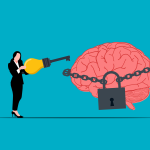The more you drink alcohol, the more you shrink your brain. In short, there is no safe level of alcohol consumption and the new Canadian alcohol guidelines are the first in the world to acknowledge this.
Why then, do we hear that a glass of red wine with dinner is heart-healthy?
Wishful thinking and poor quality research.
A lot of studies on alcohol rely on asking people how much they drink. This is fraught with problems because people often unintentionally under-estimate or don’t remember how much they drink. Secondly, studies that support a protective effect of low to moderate alcohol consumption failed to take into account what is known as the ‘healthy user bias’.
In other words, people who drank a glass or two of wine several times a week were of a higher socio-economic status, better educated, more likely to exercise and eating a healthier diet than teetotallers who were not drinking because they couldn’t afford quality food, alcohol or gym membership. If you’re eating a Big Mac and fries, how likely are you to be having a glass of red with it? Not.
Therefore, the observation that drinkers had fewer heart attacks than teetotallers was due to lifestyle factors other than alcohol. Anyone who has seriously looked into the science will tell you that the safest level of drinking is none. People who tell you otherwise — including doctors — have only read the misguided headlines or have shares in a vineyard.
What exactly is unsafe about alcohol?
Alcohol has been linked to more than 60 acute and chronic diseases, among them cancer, liver disease and dementia. The three cancers most strongly associated with alcohol are oesophagus, liver and breast. Other cancers linked to alcohol are mouth, pharynx, larynx, stomach, bowel, kidney and pancreas. In fact, one in five breast cancers are attributable to alcohol — which means they’re preventable — and one in 20 people who exceed two Australian standard drinks a day, or a total of 14 per week, are predicted to develop cancer. Each additional drink adds to our cancer and dementia risk.
The other unspoken tragedy of alcohol consumption is that many people drink to numb themselves from life. This doesn’t mean they’re alcoholics but rather what is known as ‘grey area drinkers’. Grey area drinkers have a daily habit of drinking in social settings or at home alone without signs of dependence but when they try to stop, they realise they are unable to do so for fear of not being able to function or cope with stress.
Creating a life without alcohol can feel daunting, antisocial and, in some cases, downright terrifying. If this is you, I’m thrilled to recommend a brilliant book called Beyond Booze by Sarah Rusbatch. Released in February this year, Beyond Booze will help you create a life you love so much that you no longer need to drink. Sarah writes, ‘It’s not so much about how to take alcohol out, but what to add in to create a more fulfilling, purposeful, contented life. The goal isn’t to be sober. The goal is to love yourself so much you don’t need to drink.’
To learn more about Sarah’s courageous work and her life-changing book visit https://sarahrusbatch.com/beyond-booze
To read the other HEB in this series click below.


